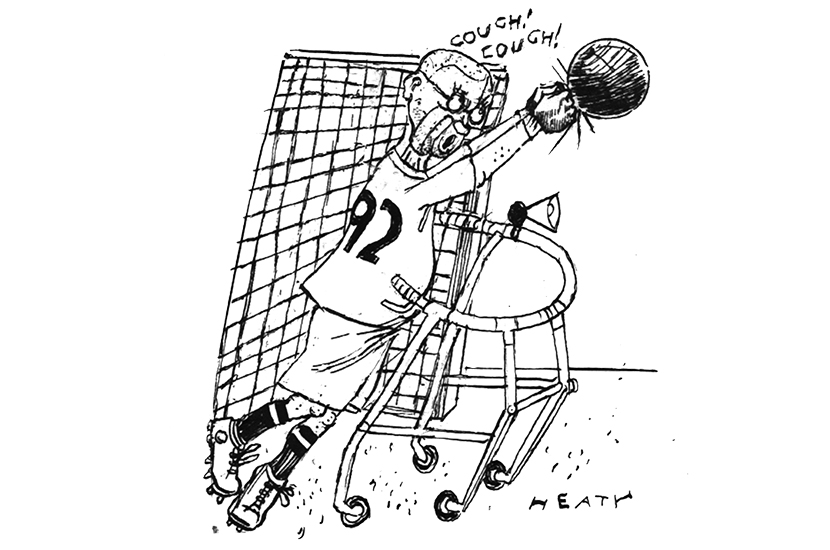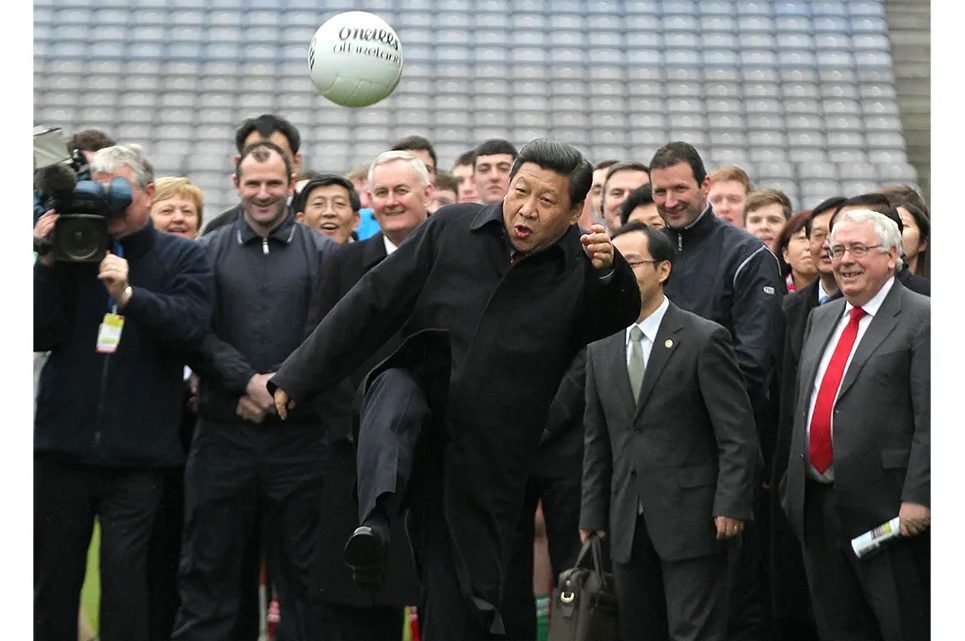As a footballer, I’m elderly not elite, meaning that I’m one of 60,000 or so 50- to 92-year-olds (yep, 92!) in England who enjoy a more pedestrian version of the sport than the Premier League’s whippersnappers.
A survey last year revealed that for many of us ‘walking footballers’, the sport is our most significant social interaction of the week. So while the Premier League continued through the winter, I was — to use footballer lingo — sick as a parrot when we somewhat older, rather slower players were red-carded by the UK government. Conversely, I was over the moon at the end of last month when we were allowed to return to the pitch.
The walking game precludes running (the clue’s in the name) or play above head height. John Croot, director of the Walking Football Association, claims to have invented the game in 2011. I dispute this only because I had moved glacially around a pitch for decades prior. Today, walking football is played in 53 countries, including in more than 1,000 locations in England.
The first international match was England over-65s’ 3-1 defeat of Italy in 2018. That team included one Tommy Charlton, whose brothers Sir Bobby and the late Jackie, to be fair, also did their bit for Britain’s football folklore. COVID meant that this year’s first-ever WF World Cup has been postponed, although the WFA plans another intriguing first — an inter-gender round-robin on May 9, including a clash between England women’s over-forties and men’s over-seventies. Be gentle, ladies.
Our game’s most contentious issue is obvious. Like Olympic walkers (who hit 7.7mph), one foot should always be grounded, but different players have different techniques to bend the rules. A straight leading leg arguably guarantees compliance though threatens a goose step. If you appear to be going too fast you’ll probably be nicked for speeding, so some players adopt a Neanderthal stoop in the hope this will sneak them under the ref’s radar. My hurried shuffle suggests lateness for an important meeting.
My club is Eastwood Falcons (we weren’t invited to join the controversial European Super League but we’re old school, so I’m pretty sure we would have declined). We have players who have, as they say, ‘played a bit’. I’ve played a lot over some 60 years but heard no one say I’ve played a bit. How is that fair? Our best and youngest include ‘Gary but everyone calls me Scouse’. I therefore call him Gary. Among our wiliest is Mark who, annoyingly, is very difficult to mark. Our most senior seniors still show flashes of genius: Ian recently scored a belter with the outside of his right boot, and even at a virtual standstill there are veterans whose drop of a shoulder can send me ambling the wrong way.
WFA sponsors include, unsurprisingly, a home equity release firm and an online pharmacy. The association must meet the same Sport England criteria as any governing body — though it makes an anti-doping policy challenging when most players are on some prescription medication.
The demographic upside, of course, is that while we don’t have the pace of pampered Premier League players, we’ve been some of the first players in the country to be vaccinated. So we’re back. Alive and kicking.
This article was originally published in The Spectator’s UK magazine. Subscribe to the World edition here.

























